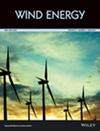Optimal selection of time windows for preventive maintenance of offshore wind farms subject to wake losses
IF 3.3
3区 工程技术
Q3 ENERGY & FUELS
引用次数: 0
Abstract
The maintenance of wind farms is one of the major factors affecting their profitability. During preventive maintenance, the shutdown of wind turbines causes downtime energy losses. The selection of when and which turbines to maintain can significantly impact the overall downtime energy loss. This paper leverages a wind farm power generation model to calculate downtime energy losses during preventive maintenance for an offshore wind farm. Wake effects are considered to accurately evaluate power output under specific wind conditions. In addition to wind speed and direction, the influence of wake effects is an important factor in selecting time windows for maintenance. To minimize the overall downtime energy loss of an offshore wind farm caused by preventive maintenance, a mixed‐integer nonlinear optimization problem is formulated and solved by the genetic algorithm, which can select the optimal maintenance time windows of each turbine. Weather conditions are imposed as constraints to ensure the safety of maintenance personnel and transportation. Using the climatic data of Cape Cod, Massachusetts, the schedule of preventive maintenance is optimized for a simulated utility‐scale offshore wind farm. The optimized schedule not only reduces the annual downtime energy loss by selecting the maintenance dates when wind speed is low but also decreases the overall influence of wake effects within the farm. The portion of downtime energy loss reduced due to consideration of wake effects each year is up to approximately 0.2% of the annual wind farm energy generation across the case studies—with other stated opportunities for further profitability improvements.受尾流损失影响的海上风电场预防性维护时间窗的最佳选择
风电场的维护是影响其盈利能力的主要因素之一。在预防性维护期间,风力涡轮机的关闭会导致停机能量损失。选择何时以及维护哪些涡轮机可以显著影响整体停机能量损失。本文利用风电场发电模型计算海上风电场预防性维护期间的停机能量损失。考虑尾流效应可以准确地评估特定风力条件下的功率输出。除风速和风向外,尾流效应的影响也是选择维修时间窗的重要因素。为使海上风电场因预防性维护而造成的整体停机能量损失最小,提出了一个混合整数非线性优化问题,并采用遗传算法求解该问题,选择各风机的最佳维护时间窗。为了确保维护人员和运输的安全,天气条件是施加的约束。利用马萨诸塞州科德角的气候数据,对模拟公用事业规模的海上风电场的预防性维护计划进行了优化。优化后的计划不仅通过选择风速较低的维护日期减少了年度停机能量损失,而且还降低了电场内尾流效应的总体影响。在整个案例研究中,由于考虑尾流效应,每年减少的停机能量损失部分约占年度风电场发电量的0.2%,并有其他进一步提高盈利能力的机会。
本文章由计算机程序翻译,如有差异,请以英文原文为准。
求助全文
约1分钟内获得全文
求助全文
来源期刊

Wind Energy
工程技术-工程:机械
CiteScore
9.60
自引率
7.30%
发文量
0
审稿时长
6 months
期刊介绍:
Wind Energy offers a major forum for the reporting of advances in this rapidly developing technology with the goal of realising the world-wide potential to harness clean energy from land-based and offshore wind. The journal aims to reach all those with an interest in this field from academic research, industrial development through to applications, including individual wind turbines and components, wind farms and integration of wind power plants. Contributions across the spectrum of scientific and engineering disciplines concerned with the advancement of wind power capture, conversion, integration and utilisation technologies are essential features of the journal.
 求助内容:
求助内容: 应助结果提醒方式:
应助结果提醒方式:


